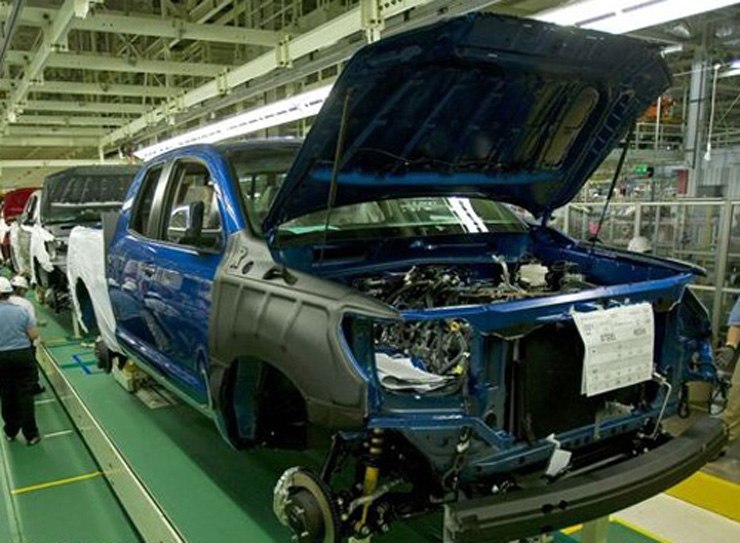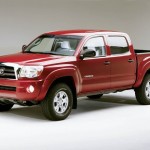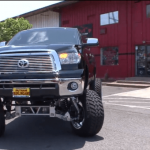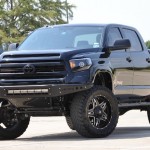For the second time this year, a senior Toyota executive has once again highlighted the necessity of revising their truck production strategy. As dealer demand continues to surge and customers express a growing appetite for more Tundra configurations and powertrain choices, Toyota finds itself at a critical juncture. The automaker must adapt to meet these rising expectations. The production line for the Tundra and Tacoma is reaching its limits. With the introduction of new, undisclosed Tundra models looming, could Tacoma production be relocated once again? It's been several years since Toyota consolidated the production of the Tacoma and Tundra into a single facility in San Antonio, Texas. However, this arrangement might soon reach its conclusion. Recently, Bill Fay, General Manager of the Toyota division, told Autonews.com: “Our dealers report they could sell more Tacomas and Tundras. We're assessing our production footprint and capacity."
Fay elaborated that the San Antonio plant currently operates at full capacity, producing 250,000 units annually through two shifts, overtime, and weekend work. Even with these efforts, the maximum additional output they can achieve is roughly 7,000 more units. Given the ongoing upward trend in pickup truck sales, this increase may fall short of meeting future demands.
Toyota does have another facility in Tijuana, Mexico, which produces around 50,000 Tacoma trucks annually. However, the majority of these vehicles are sold within Mexico and Canada.
The reality is that if Toyota aims to satisfy the heightened demand for its trucks, it will need to address its capacity constraints. This challenge is a significant factor behind Toyota’s limited range of configurations and powertrain options. While Chief Engineer Mike Sweers has expressed interest in exploring more options, he acknowledged the capacity issue as a key obstacle in a July 29, 2013, USA Today article. At that time, Sweers noted that Toyota was considering moving Tacoma production to Mexico and finding ways to improve production efficiency. He also mentioned strong pre-orders for the new truck and plans for undisclosed additional variants that could further boost demand.
These new variants might include an all-new Rock Warrior package (which was discontinued in 2013 but rumored to be under consideration), a heavy-duty model (possibly a 1/2-ton HD or heavy half-ton), and other powertrain options like the much-discussed diesel engine. These HD and powertrain options were discussed as early as 2007, before the economic downturn. Now, with truck sales nearing the 2 million annual mark, the business case for introducing these models has never been stronger.
Ultimately, it appears highly probable that Toyota intends to expand the range of Tundra offerings. The pressing question remains where these new models will be produced. If Toyota can resolve its capacity issues, the possibilities for new truck models are virtually limitless.
In conclusion, Toyota’s future in the truck segment looks promising, provided they can effectively manage their production challenges. Whether it’s reviving old favorites or introducing entirely new models, Toyota has the potential to revolutionize the market once again. vibrating sieves, also called vibrating screen, circular vibrating screen, sand vibrating screener, are used to separate materials into various sizes for further processing or for end use. The material is separated by passing through a vibrating [screen or meshes" which has a number of different sized according to customer`s requirements. The end products can then be used in the building and construction industries. It feature advanced structure, powerful vibrating forces, low vibration noise, easy maintenance, high durability and etc. Vibrating Screen,Circular Vibrating Screen,Sand Vibrating Screen,Quarry Screen Machine henan ascend machinery , https://www.ascendminingcrusher.com
Related Posts
 Interesting Toyota Tacoma Facts
Interesting Toyota Tacoma Facts Mini-Monster Toyota Tundra Platinum Crew Max – Featured Ride
Mini-Monster Toyota Tundra Platinum Crew Max – Featured Ride
 Check Out This Stunning Custom Venom Tundra
Check Out This Stunning Custom Venom Tundra
 So You Hate Lowered Trucks…What About These Tundras
So You Hate Lowered Trucks…What About These Tundras